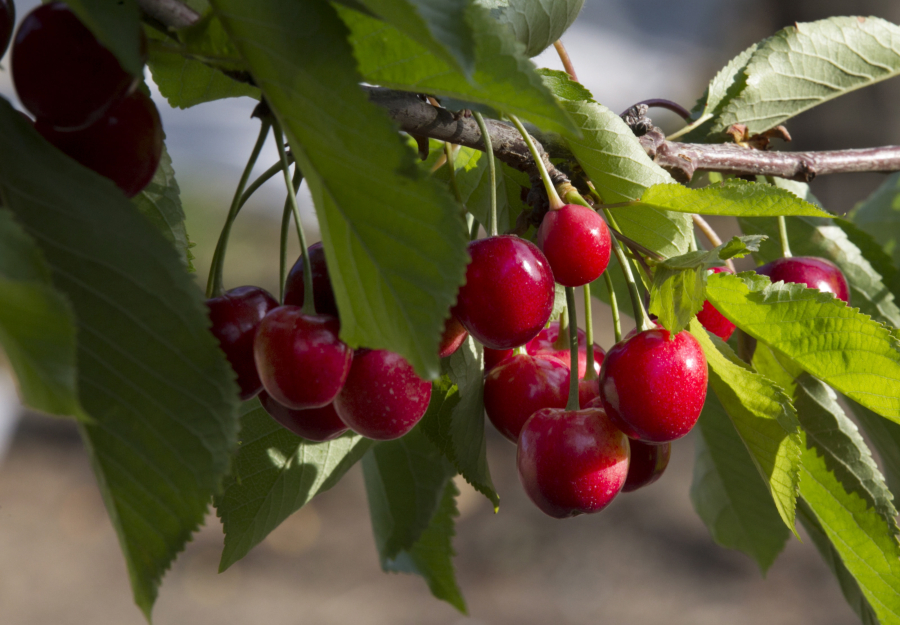YAKIMA — Extreme weather and the COVID-19 pandemic had a sizable impact on the 2021 cherry growing season and harvest. So why should a meeting of cherry growers reviewing the past year be any different?
“Last year we had some weird cards dealt to us,” noted B.J. Thurlby, Northwest Cherry Growers president, during his opening remarks at Friday’s 2022 Cherry Institute meeting at the Yakima Convention Center.
A record-setting heat wave reduced the 2021 cherry crop by as much as 20 percent, Thurlby said. Overall, the Northwest region harvested 20.3 million boxes of cherries in 2021, a number that could have been close to 25 million without the intense heat wave, he said.
The pandemic prevented cherry industry leaders and growers from meeting in person last year. A recent surge in omicron variant cases causing another wave of COVID infections kept Brett Monson, president of the Cherry Institute, from attending Friday’s event and from making his welcoming address.
A series of storms that closed major mountain passes for much of the week prevented several speakers from traveling to the Cherry Institute, although some, such as Kevin Hu of the Northwest Cherry Growers, were able to speak via Zoom (and Thurlby’s cellphone) from the Seattle area.
Hu’s efforts to market Washington sweet cherries internationally, along with consumers’ increasing awareness of the fruit’s health benefits, were among the highlights of Friday’s program.
Hu reported that while COVID lockdowns and supply chain problems affected Northwest Cherry Growers’ marketing strategies in 2021, total exports of cherries from our region still increased 6 percent overall, with Japan importing its largest volume of cherries in six years.
Major export markets such as China, South Korea, Australia and Mexico also received more Northwest cherries than previous years, Hu said, with Mexico showing major potential for growth.
“When the opportunity presents itself, we can move a lot of cherries in Mexico,” he added.
James Michael, Northwest Cherry growers’ vice president of marketing for North America, discussed efforts to promote the health benefits of cherries, and the increase in digital promotion efforts.
A survey of 6,000 U.S. consumers showed that most believe cherries have more health benefits than fruits such as watermelons and grapes — although avocados and blueberries rated higher than cherries.
Still, the survey indicated that younger consumers, ages 25-44, are now buying as many cherries as older customers, ages 55-74 — a promising trend, Michael said.
“Nearly two-thirds of consumers are saying the health benefits are part of their decision to reach out and buy that bag of cherries,” Michael added.
Thurlby, in his opening remarks, noted the average price of cherries is increasing along with just about everything else, with most varieties of sweet cherries averaging $3.49 to $3.99 per pound in U.S. grocery stores.
So the fact that cherries are a low glycemic fruit, a source of potassium and vitamin C, and a natural anti-inflammatory food can help shoppers select what Thurlby admitted is an “impulse buy.”
“We don’t want people to say, ‘I can’t afford to pay $3.99 for your cherries.’ We want people to say, ‘I can’t afford not to pay $3.99 for your cherries,’” Thurlby said. “At the end of the day … we have a great product. Cherries are healthy, they taste good, they’re seasonal. We have a truly unique and special product.”




